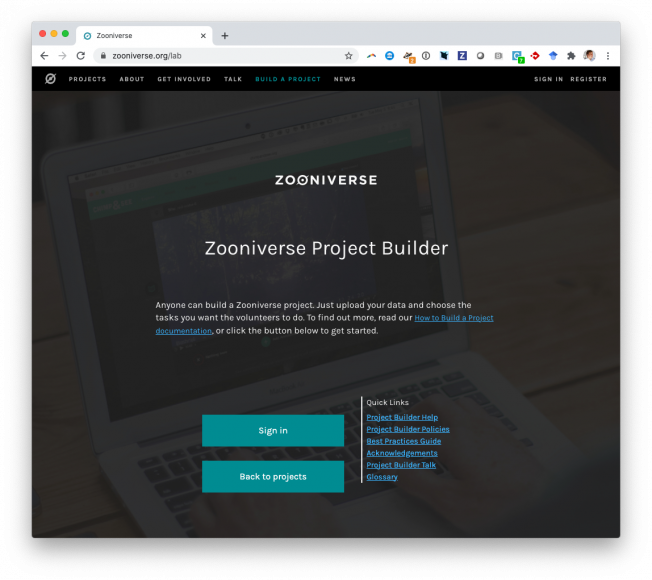Processing citizen science- and machine-annotated time-lapse imagery for biologically meaningful metrics
Scientific Data Nature Research 7:1 (2020) 102
Abstract:
Time-lapse cameras facilitate remote and high-resolution monitoring of wild animal and plant communities, but the image data produced require further processing to be useful. Here we publish pipelines to process raw time-lapse imagery, resulting in count data (number of penguins per image) and ‘nearest neighbour distance’ measurements. The latter provide useful summaries of colony spatial structure (which can indicate phenological stage) and can be used to detect movement – metrics which could be valuable for a number of different monitoring scenarios, including image capture during aerial surveys. We present two alternative pathways for producing counts: (1) via the Zooniverse citizen science project Penguin Watch and (2) via a computer vision algorithm (Pengbot), and share a comparison of citizen science-, machine learning-, and expert- derived counts. We provide example files for 14 Penguin Watch cameras, generated from 63,070 raw images annotated by 50,445 volunteers. We encourage the use of this large open-source dataset, and the associated processing methodologies, for both ecological studies and continued machine learning and computer vision development.Galactic conformity in both star formation and morphological properties
Monthly Notices of the Royal Astronomical Society Oxford University Press 492:2 (2020) 2722-2730
Abstract:
We investigate one-halo galactic conformity (the tendency for satellite galaxies to mirror the properties of their central) in both star formation and morphology using a sample of 8230 galaxies in 1266 groups with photometry and spectroscopy from the Sloan Digital Sky Survey, morphologies from Galaxy Zoo and group memberships as determined by Yang et al. This is the first paper to investigate galactic conformity in both star formation and visual morphology properties separately. We find that the signal of galactic conformity is present at low significance in both star formation and visual morphological properties, however it is stronger in star formation properties. Over the entire halo mass range we find that groups with star-forming (spiral) centrals have, on average, a fraction 0.18 ± 0.08 (0.08 ± 0.06) more star-forming (spiral) satellites than groups with passive (early-type) centrals at a similar halo mass. We also consider conformity in groups with four types of central: passive early-types, star-forming spirals, passive spirals, and star-forming early-types (which are very rarely centrals), finding that the signal of morphological conformity is strongest around passive centrals regardless of morphology; although blue spiral centrals are also more likely than average to have blue spiral satellites. We interpret these observations of the relative size of the conformity signal as supporting a scenario where star formation properties are relatively easily changed, while morphology changes less often/more slowly for galaxies in the group environment.Revealing the cosmic evolution of boxy/peanut-shaped bulges from HST COSMOS and SDSS
Monthly Notices of the Royal Astronomical Society Oxford University Press 490:4 (2019) 4721-4739
Abstract:
Vertically thickened bars, observed in the form of boxy/peanut (B/P) bulges, are found in the majority of massive barred disc galaxies in the local Universe, including our own. B/P bulges indicate that their host bars have suffered violent bending instabilities driven by anisotropic velocity distributions. We investigate for the first time how the frequency of B/P bulges in barred galaxies evolves from z = 1 to z ≈ 0, using a large sample of non-edge-on galaxies with masses M* > 1010 M☉, selected from the HST COSMOS survey. We find the observed fraction increases from 0+−3060 per cent at z = 1 to 37.8+−5541 per cent at z = 0.2. We account for problems identifying B/P bulges in galaxies with low inclinations and unfavourable bar orientations, and due to redshift-dependent observational biases with the help of a sample from the Sloan Digital Sky Survey, matched in resolution, rest-frame band, signal-to-noise ratio and stellar mass and analysed in the same fashion. From this, we estimate that the true fraction of barred galaxies with B/P bulges increases from ∼10 per cent at z ≈ 1 to ∼ 70 per cent at z = 0. In agreement with previous results for nearby galaxies, we find a strong dependence of the presence of a B/P bulge on galaxy stellar mass. This trend is observed in both local and high-redshift galaxies, indicating that it is an important indicator of vertical instabilities across a large fraction of the age of the Universe. We propose that galaxy formation processes regulate the thickness of galaxy discs, which in turn affect which galaxies experience violent bending instabilities of the bar.Galaxy zoo: Probabilistic morphology through Bayesian CNNs and active learning
Monthly Notices of the Royal Astronomical Society Oxford University Press 491:2 (2019) 1554-1574
Abstract:
We use Bayesian convolutional neural networks and a novel generative model of Galaxy Zoo volunteer responses to infer posteriors for the visual morphology of galaxies. Bayesian CNN can learn from galaxy images with uncertain labels and then, for previously unlabelled galaxies, predict the probability of each possible label. Our posteriors are well-calibrated (e.g. for predicting bars, we achieve coverage errors of 11.8 per cent within a vote fraction deviation of 0.2) and hence are reliable for practical use. Further, using our posteriors, we apply the active learning strategy BALD to request volunteer responses for the subset of galaxies which, if labelled, would be most informative for training our network. We show that training our Bayesian CNNs using active learning requires up to 35–60 per cent fewer labelled galaxies, depending on the morphological feature being classified. By combining human and machine intelligence, Galaxy zoo will be able to classify surveys of any conceivable scale on a time-scale of weeks, providing massive and detailed morphology catalogues to support research into galaxy evolution.A ghost in the toast: TESS background light produces a false “transit” across τ Ceti
Research Notes of the AAS American Astronomical Society 3:10 (2019) 145



